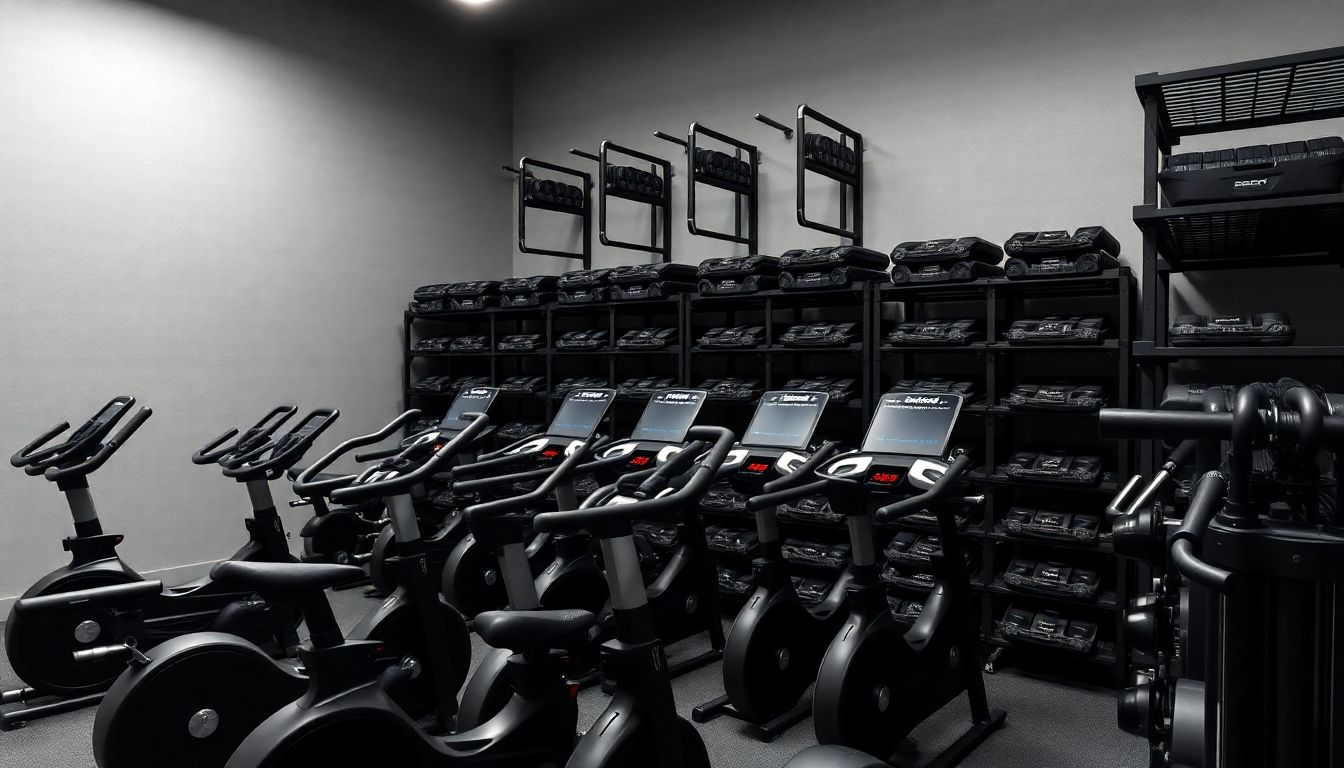Have you ever tripped over a rogue dumbbell or found yourself tangled in a resistance band before commencing your workout? This happens. A cluttered workout area can instantly wipe out any motivation. It can even lead to injury. Therefore, organized gym equipment storage is essential.
Adequate storage could be the difference between constructing a well-organized, functional area versus a cluttered one in your gym. This makes working out all the more enjoyable-without the risk of injury. How, then, do you do it? Therefore, read on for some great inspirations to help you sort out your gym storage needs.
Assessing Your Gym Equipment Storage Needs
Before you consider storage options, think about what you have. Also, consider how much space you have. Planning helps you to choose the best solutions.
Inventory Assessment
First, catalog everything. Free weights, resistance bands, yoga mats, and foam rollers would be included in this list. Make an item list of which you will keep. Include their size and weight. This is the first factor for effective gym storage.
Ways to approach this:
- Excel or list.
- Indicate size and weight for every item.
- Include any new gear you might purchase.
Space Evaluation
Now take a look around your workout space. Measure the floor, walls, and ceiling. Are there any unused corners or even vertical areas? Sketching storage placement could offer you more vision on how to maximize your space. It’s all about available inches!
Here are some tips to evaluate your space:
- Take careful measurements of your workout area.
- Sketch out a layout to visualize options.
- Do not forget to measure wall and ceiling space.
Prioritizing Storage
What gets used most? Those come first in line for consideration. Big equipment might need a safe zone. Light and lesser-used equipment can be put away further or higher. As always, consider your workout routine.
When identifying storage priorities:
- Organize equipment by use.
- Recognize frequently used items first.
- Secure heavy equipment safely.
Vertical Storage Solutions
Vertical storage rescues small spaces by using walls while keeping the floor clear, making for a safer and more open workout area.
Wall-Mounted Racks and Shelves
Wall-mounted racks are ideal for heavier weights, while shelves are useful for smaller pieces of equipment like kettlebells and medicine balls. These storage types elevate the equipment off the floor, allowing for ease of access and cleanliness of the gym.
Consider when mounting racks and shelves on the wall:
- Pick sturdy racks that can manage weights.
- Secure them well into wall studs.
- Keep equipment easily organized to access.
Pegboards and Slatwalls
Pegboards and slatwalls have endless combinations. Free up your layout according to your choice. Adjust as your needs change.
Benefits of pegboards and slatwalls:
- Maximum customization.
- They work well for different sizes of equipment.
- They keep accessories in check and sighted.
Space-Saving Dumbbells and Weight Plate Trees
Dumbbell and weight plate trees save floor space. Keeping weights off the ground, these trees can come in different sizes to suit each need. A weight tree is absolutely essential for weight storage.
To ensure you get the right tree:
- Choose one that has a strong base.
- Check weight capacity.
- Count the number of weight slots.
Horizontal Storage-Like Everything Else
And that’s how smart horizontal storage uses floor space. These will also work well for those things you mostly use, like rolling carts or benches with built-in storage.
Rolling Carts and Baskets
Rolling carts are amazing for yoga mats and towels. Smaller items can be stored in baskets. These are easily movable depending on the specific needs at hand. The best addition to your workout convenience.
When buying rolling carts and baskets:
- Similir wheel durability for easy rolling.
- Storage capacity is also as important.
- Breathe well materials for towels.
Weight Benches with Storage
Some weight benches come with a built-in storage unit. These fit dumbbells and bands, combining seating with storage to maximize the workout-room space.
The finest bench offers:
- Comfortable, durable seating.
- Robust compartments for storage.
- Easy access to stored equipment.
Under-Equipment Storage
Each of the larger pieces of equipment could have its own storage under it. These include riser/platform types under treadmills or bikes. Mats or light weights can be placed here. Ensure this area is sturdy and safe.
To use under-equipment storage safely:
- Ensure risers are strong enough.
- Even weight distribution helps.
- Keep area clean.
Specialized: Storage for Individual Equipment
Every piece of equipment comes with unique storage options. Barbells, yoga mats, resistance bands.handler- specific solutions for keeping their gyms organized and safe.
Barbell Storage
Vertical or horizontal storage for barbells. Mount wall racks for space savings. Floors stands give ready access. Weight-meeting storage is a must.
For safety while storing your barbell:
- Verify the weight capacity rack.
- Mount rack onto the wall securely.
- Consider both vertical and horizontal options.
Yoga Mat Storage
Yoga mats can go on the wall-mounted racks or on rolling carts. Decorative baskets can also do the trick. Allow mats to air out properly. This eliminates any moisture and odor.
While storing yoga mats:
- Leave space between mats on the rack.
- Allow air to dry the mats.
- Consider decorative touches.
Resistance Band Storage
Hang resistance bands on pegboards or hooks. It can serve great for drawer organizers as well. use colored labels for easy differentiation. With proper storage, bands last long.
Conclusion
Storage of gym equipment in an organized manner pays off. The safety of such storage works wonders for your workouts too. Plus, it saves space. Evaluate your requirements. Choose fitting solutions for your space and equipment. With this, your workout space shall be transformed into a cheerful little fitness nook. Start organizing today and engage better with your workouts!
